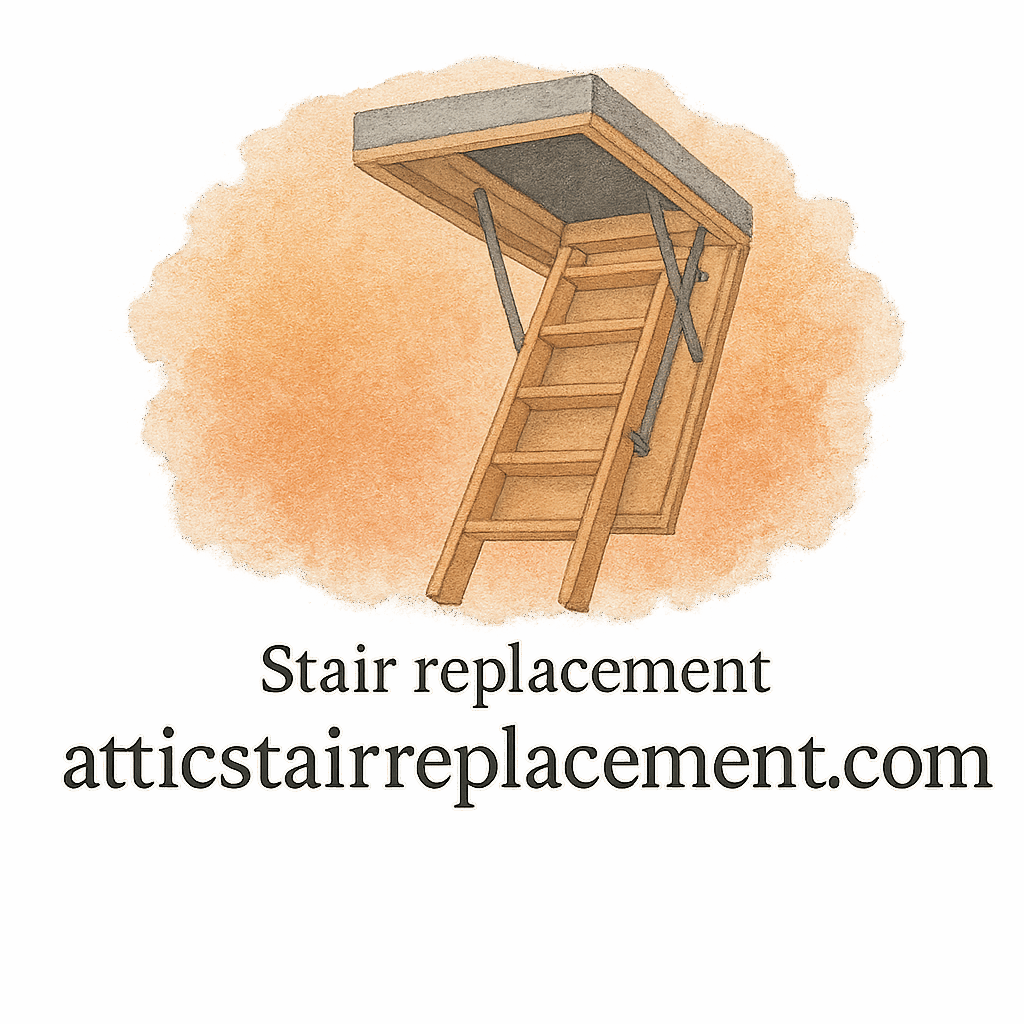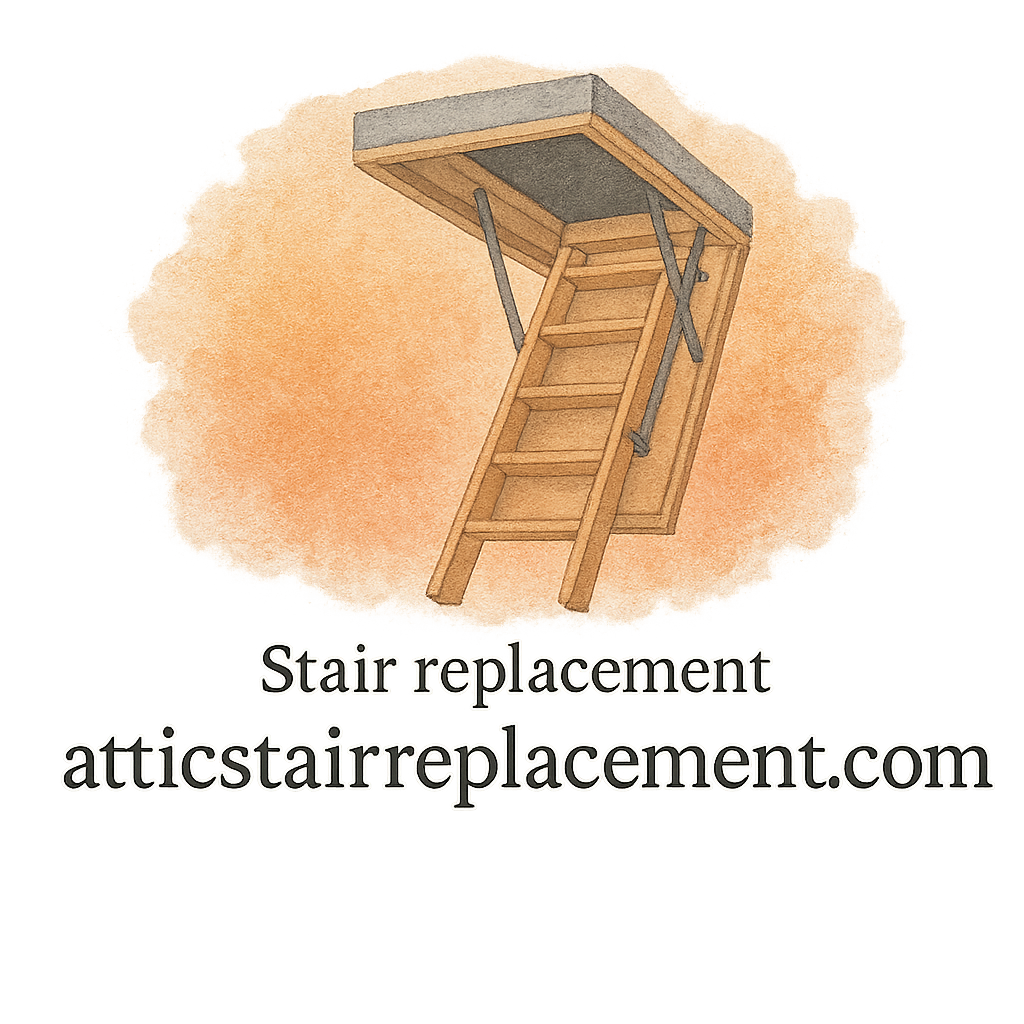Introduction: Why Attic Stair Replacement Isn’t Always Straightforward
Replacing attic stairs might sound like a simple home project—remove the old ladder, install the new one, and you’re done, right? Well, not exactly. Many homeowners are surprised to discover that attic stair replacement comes with unexpected costs lurking around every corner. From structural adjustments to permits and finishing touches, what seems like a straightforward project can easily balloon into something more complicated—and more expensive.
If you’re planning an attic stair replacement, understanding these hidden costs can save you from budget shocks and unnecessary stress. Let’s break them down one by one so you can prepare ahead of time.
Understanding the Basics of Attic Stair Replacement
What Attic Stair Replacement Really Involves
At its core, attic stair replacement isn’t just swapping one ladder for another. It involves:
- Removing the old stair unit (often messy and labor-intensive).
- Assessing the structural integrity of your ceiling and attic frame.
- Installing the new stair system securely and safely.
- Finishing and sealing the area so it blends with your ceiling design.
Each step can introduce extra costs if something doesn’t go as planned.
Why Homeowners Underestimate the Costs
The problem is that most homeowners only budget for the price of the new attic stairs themselves. But like any home improvement project, the purchase is just the beginning. Labor, compliance, safety features, and long-term maintenance often cost more than the stair unit itself.
Hidden Cost #1: Structural Adjustments
Enlarging or Modifying the Opening
Not all attic stairs fit into your existing opening. You may need to cut and expand the opening to accommodate the new model. This requires careful carpentry to ensure you’re not weakening the ceiling.
Reinforcing Ceiling Joists and Frames
If your attic joists weren’t built to handle the weight of modern attic stairs, you’ll need reinforcement. Structural reinforcement isn’t optional—it’s required for safety and durability.
Hidden Cost #2: Professional Labor Fees
Contractor Hourly Rates vs. Flat Rates
Hiring a contractor might seem like the more expensive route, but often it saves headaches in the long run. The catch? Hourly rates vary widely, and sometimes flat-rate jobs exclude cleanup or finishing work.
The Extra Charges Nobody Mentions
Small tasks like sealing air leaks, adjusting ceiling trim, or insulating gaps aren’t always included in quotes. These add-ons can quietly increase your bill.
Hidden Cost #3: Disposal and Cleanup
Removing Old Attic Stairs Safely
Old attic stairs aren’t just bulky—they can be hazardous. Broken hinges, warped wood, or rusty nails make removal tricky. If your contractor charges extra for safe removal, don’t be surprised.
Debris Hauling and Waste Management
Once removed, those bulky wood pieces don’t just disappear. You may need to pay for dumpster rental, hauling, or waste disposal fees.

Hidden Cost #4: Permit and Inspection Fees
Local Building Codes and Compliance
Depending on where you live, replacing attic stairs may require a permit. This ensures the new stairs comply with building and fire codes. Permits add cost and sometimes delay the project.
Surprise Inspection Failures
Even if you follow the rules, inspectors may flag something unexpected—forcing you to make corrections before passing. That means extra labor and extra money.
Hidden Cost #5: Finishing and Aesthetic Work
Painting, Trim, and Ceiling Repairs
After installation, the ceiling around your new attic stairs may look rough. You’ll likely need patching, painting, or trim installation.
Matching Interior Design
If you’re picky about aesthetics, making the new stairs match your existing design can require custom work—another hidden expense most don’t consider.
Hidden Cost #6: Upgrades for Safety and Durability
Heavy-Duty or Fire-Rated Options
Basic attic stairs may be cheap, but if you want heavy-duty or fire-rated options, expect to pay significantly more. These upgrades are often worth it, especially for long-term durability.
Non-Slip Steps, Handrails, and Locks
Safety upgrades like handrails or slip-resistant treads may not come standard, yet they’re crucial for preventing accidents.
Hidden Cost #7: Ongoing Maintenance Needs
Wear-and-Tear Repairs
Attic stairs are moving parts, and moving parts wear down. Hinges, springs, and locks often require replacement over time.
Long-Term Care to Prevent Failures
Ignoring regular maintenance can shorten the life of your stairs. A little care upfront prevents costly breakdowns later.
How to Avoid Hidden Costs in Attic Stair Replacement
Planning Ahead and Budgeting Smartly
Create a realistic budget that includes extra for surprises. A 15–20% buffer is a good rule of thumb for home projects.
DIY vs. Hiring a Contractor
Yes, DIY installation saves money upfront. But if you make a mistake, repairs can cost more than hiring a pro from the start.
Expert Advice on Managing Costs
When to Seek Professional Guidance
Sometimes it’s cheaper to consult an expert before starting. They can flag potential issues early.
Learning from Common Mistakes
Plenty of homeowners have gone before you—and many share stories of hidden costs. Reading guides and expert advice helps you avoid repeating their mistakes.
Conclusion: Transparency is the Key
The truth is, attic stair replacement is rarely just a one-line cost. From hidden costs like structural adjustments to long-term maintenance, it’s a project that rewards careful planning. By budgeting wisely, asking the right questions, and leaving room for surprises, you can complete your replacement without breaking the bank.
FAQs
1. What is the average cost of attic stair replacement?
Most attic stair replacements range from $300–$1,200, depending on the type, labor, and finishing work.
2. Can I replace attic stairs myself?
Yes, a skilled DIYer can handle it. But if structural changes are needed, hiring a professional is safer.
3. Do attic stairs require permits?
In many areas, yes. Always check local codes before starting.
4. How long does attic stair replacement take?
A basic replacement takes 2–4 hours. Complex projects with structural changes can take a full day or more.
5. What type of attic stairs last the longest?
Durable materials like aluminum or heavy-duty steel tend to last the longest.
6. How do I know if my attic stairs need replacement?
Signs include wobbling, broken springs, warped steps, or difficulty opening/closing.
7. Are hidden costs avoidable?
You can’t always avoid them, but planning, research, and hiring the right contractor help minimize surprises.


